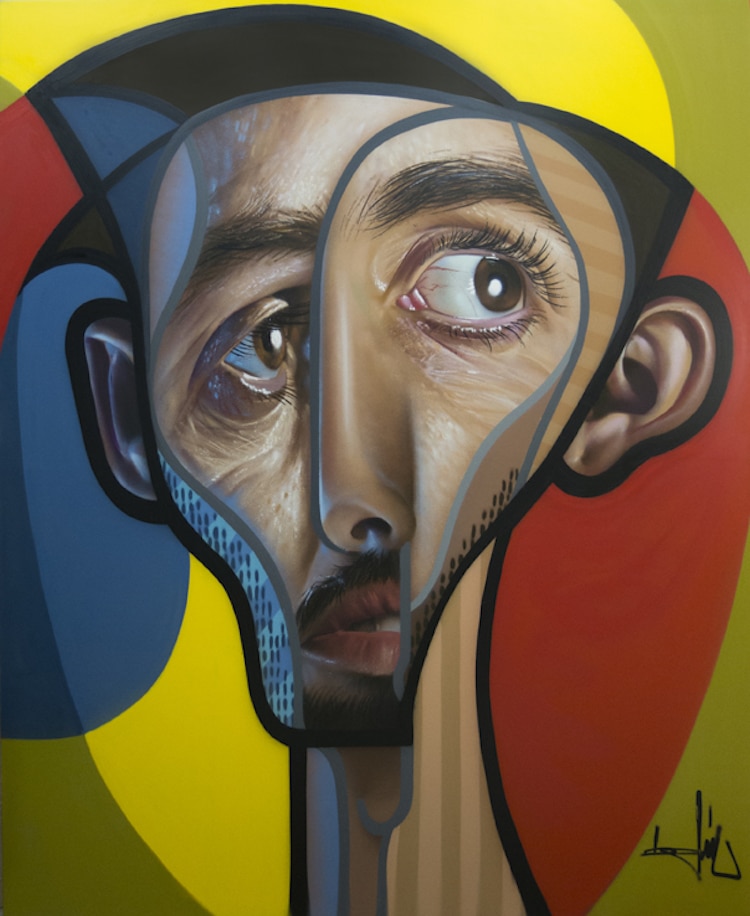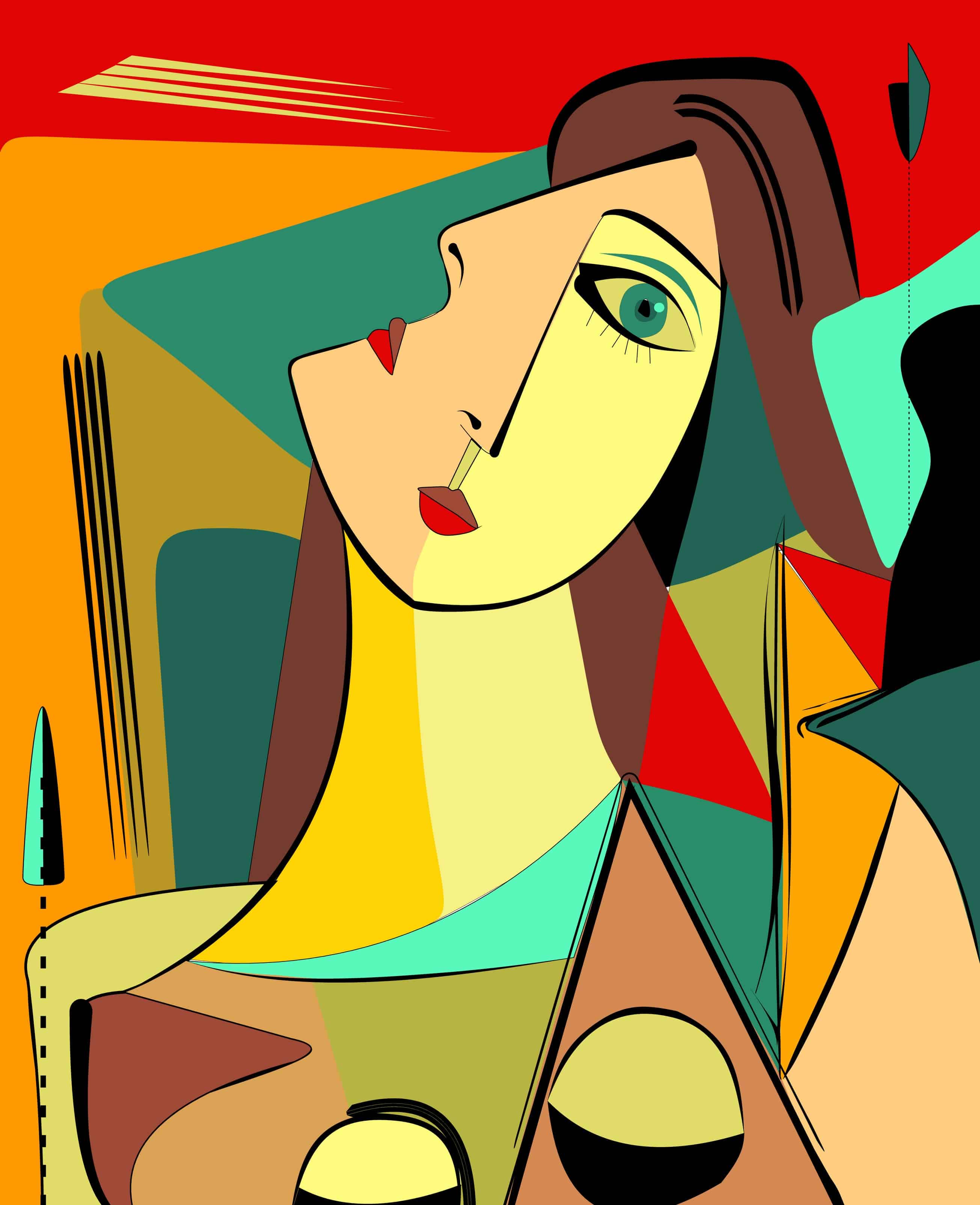
Cubist Original Oil Painting Modern Cubism Blue Violinist Marlina Vera
Pablo Picasso - Cubism, Modern Art, Masterpiece: Picasso and Braque worked together closely during the next few years (1909-12)—the only time Picasso ever worked with another painter in this way—and they developed what came to be known as Analytical Cubism. Early Cubist paintings were often misunderstood by critics and viewers because they were thought to be merely geometric art.

[Cancelled]Friday March 27th Art & Sip Cubist Expressionist Painting
Some historians have argued that these innovations represent a response to the changing experience of space, movement, and time in the modern world. This first phase of the movement was called Analytic Cubism. In the second phase of Cubism, Synthetic Cubism practicioners explored the use of non-art materials as abstract signs.

‘Cubism The Leonard A. Lauder Collection,’ Starring Picasso and Braque
The Women of Algiers by Pablo Picasso, 1955, sold by Christie's (New York) in 2015 for an astonishing $179 million to Sheikh Hamad bin Jassim bin Jaber Al Thani, Doha, Qatar. Cubism art was a modern movement that is known today as the most influential period in 20th-century art.It has also inspired subsequent styles in architecture and literature. It is known for its deconstructed, geometric.

The Lasting Effects of Cubism
Cubism was a revolutionary new approach to representing reality invented in around 1907-08 by artists Pablo Picasso and Georges Braque. They brought different views of subjects (usually objects or figures) together in the same picture, resulting in paintings that appear fragmented and abstracted. Cubism was one of the most influential styles.

Ben Garrison My Latest Cubist Paintings
Cubism is a Western modern art movement that began around 1907 in Paris, France and started to decline in 1914 with the start of the First World War. Although the original Cubist movement changed dramatically during this time, its influence lived on in art movements like Futurism, Constructivism, Abstract Expressionism, and others..

Captivating Cubism Art That Will Have You Gasping With Delight Bored Art
The Bread (1921): A Cubist still life featuring bread and a knife, both broken down into geometric shapes and overlapping planes. These pieces, along with many others, established Picasso as one of the most influential forces in modern art. Through his bold experimentations and unique vision, he forever changed the way we see and understand art
The Influence of Art History on Modern Design Cubism Graphic design
Deriving its name from the Latin word for a cube, Cubism breaks images and objects down into fragments of squares, cones, spheres, pyramids, and other geometric shapes. There are three distinct periods within the Cubism art movement: Analytical Cubism, Synthetic Cubism, and Orphic Cubism. Still Life with a Guitar (1913) by Juan Gris; Juan Gris.

Cubism portrait by lilrich731 on DeviantArt Cubist portraits, Pop art
The emergence of Cubist artists came at the turn of the 20th century. Led by Picasso and Braque, Cubism brought about a new way of seeing and perceiving in art. Cubism introduced the idea of breaking down objects into planes and ultimately dismantling the way we think we should see. By flattening, abstracting and pulling apart the original form.

Cubist Portrait Painting by Koola Adams Artmajeur
Cubism was a revolutionary artistic movement that emerged as a response to a rapidly changing world. Its distinctive characteristics, including geometric abstraction, analytical methodology, incorporation of collage and mixed media, and intellectual engagement set it apart from contemporary art movements.

Graffiti Portraits Creatively Blend Cubism with Hyperrealism
By Kelly Richman-Abdou on August 6, 2022. Since its emergence over 100 years ago, Cubism has been regarded as one of modern art 's most famous and fascinating art movements. Cubism is closely associated with iconic artists like Pablo Picasso, whose avant-garde approach to everyday subject matter turned art history on its head.

Contemporary Cubism Art Print "Sax Solo" Chicago Skyline Art
Cubism can be split into two distinct phases. The first phase, analytical cubism, is considered to have run until around 1912. It looks more austere or serious. Objects are split into lots of flat shapes representing the views of them from different angles, and muted colours and darker tones or shades are used.

Original Abstract Painting Cubism Acrylic on canvas Marlina Etsy
Cubism was an influential visual style of art, approached by various artists. As an evolving movement it had become a lasting technique of painting throughout the period of Modern Art. Cubism enabled many artists to abandon the traditional art and recognize a new perspective consisted of geometric shapes, a construction of lines, and a new.

Oleg Zhivetin, Tashkent, Uzbekistan Cubist art, Art painting, Cubism art
Cubism is an abstract artistic movement created by Pablo Picasso and Georges Braque in the early 1900s that influenced other forms of art, music and literature.

a drawing of two people with different colored shapes on their faces
The Influence of Cubism on Modern Art. Everyone will probably recognize the apparently strange, fragmented paintings, often with primary shapes and colours. There is a good chance that this was a cubist work of art. At the beginning of the last century, Cubism left a lasting impression on later and contemporary art movements and architecture.

17 Different Types of Art for Your Home
Cubism, highly influential visual arts style of the 20th century that was created principally by the artists Pablo Picasso and Georges Braque in Paris between 1907 and 1914. The Cubist style emphasized the flat, two-dimensional surface of the picture plane, rejecting the traditional techniques of perspective, foreshortening, modeling, and chiaroscuro and refuting time-honoured theories that.

62 Cubism Art Ideas Cubism art, Cubist paintings, Cubist art
Cubism. Pablo Picasso, 1910, Girl with a Mandolin (Fanny Tellier), oil on canvas, 100.3 × 73.6 cm, Museum of Modern Art, New York. Cubism is an early-20th-century avant-garde art movement that revolutionized European painting and sculpture, and inspired related artistic movements in music, literature, and architecture.